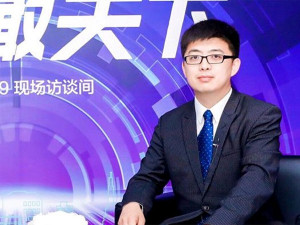Shifting trends in semiconductors will see 14nm microchips achieve full-scale production in China during 2022.
Chinese chip manufacturers and component suppliers have overcome the most important technical challenges and succeeded in localising the entire 14nm chip production line and supply chain, according to a leading expert at Zhejiang University.
Wu Hanming, Dean of the College of Microelectronics and Nanoelectronics at Zhejiang University believes that “In the post-Moore era, the development of industrial technology has slowed down. However, in China, the space and opportunities for innovation have been increasing. Domestic companies have invested a lot of resources in manufacturing technology recently, providing our equipment with the capabilities needed in large scale chip manufacturing production lines, for example, etching, CVD heat treatment, CMP, cleaning machines, etc.”
Relatively mature chips have become the focus of demand across a range of industries. Against the backdrop of the rise of the Internet of Things, the transfer of the semiconductor industry, and the era of Moore’s Law drawing to a close, self-sufficiency in 14nm chips will mean a lot, according to Wu. 14nm is an advanced process chip and is still a mature technology when compared with other semiconductor technologies like 3nm and 5nm.
In terms of application, 14nm chips are mainly used in high-end consumer electronics, AI chips, application processors, and automotive electronics. International groups are mass-producing the chips, with GlobalFoundries Inc. achieving mass production of 14nm in 2015, and United Microelectronics Corp. in 2017. SMIC achieved a similar standard of production in 2019.
The manufacturing process for 14nm microchips faced three major challenges: pattern transfer, new materials, and increasing the yield rate. To address these challenges, key equipment such as etching machines and thin film deposition have been realised from scratch and applied in large-scale production lines. Breakthroughs have also been made in the research and development of the 14nm process. Moreover, the results of subsequent packaging integration technology have been fully realised in mass production, and hundreds of key materials, such as polishing agents and sputtering targets, have achieved the requirements of large-scale production lines and entered mass sales.
These achievements have now covered the entire industrial supply chain for integrated circuits in China, introducing a complete set of process technologies. This means that China is now fully capable of mass production of 14nm chips. The capacity of domestic Chinese production is still being limited by fluctuations in international trade but as demand for chips in China is growing rapidly in response to the needs of the industrial internet and IoT, localization of 14nm production is both necessary and urgent.
The development of industrial, automotive, and medical equipment will stimulate further demand for large numbers of basic components, which will become an indispensable part of the supply chain. From a macro point of view, the Internet of Everything and the explosion of the Internet of Things will replace the mobile internet era with mobile phones as the centre. With chips as the basic components, the supply side is quietly changing which will create huge demand for 14nm chips.
According to IDC data, in 2024 the expenditure of China’s Internet of Things market is expected to reach 300 billion US dollars. China itself will account for 45% of global chip demand. From the data of the semiconductor industry, the growth rate of chips based on the industrial internet and the Internet of Things is rising.
The Internet of Things is widely used in automotive, industrial and other manufacturing industries, and among all the chips used for these applications, 14nm chips are becoming the focus of demand. These scenarios do not require complex chip technology, but high performance and reliability, which is exactly what 14nm can deliver. For example, automotive chips require long-term verification, high reliability, and adaptation to various extreme conditions, but they do not need to be scaled down to 5nm or 7nm, unlike chips used for mobile phones.
The quantity of chips required for the Internet of Things is far greater than for consumer electronics, and the manufacturing process requirements for chips are much lower than for mobile phones. Some automotive and industrial chips even only require 14nm, 28nm, and 45nm process levels, which require higher cost-effectiveness, and even higher requirements for the ability of chip adaptation services and scenario adaptation.
Since the second half of 2020, the global pandemic and subsequent natural disasters have contributed to a large-scale global shortage of chips which has shrunk the supply chain, reducing the communication efficiency between upstream and downstream, and slowing the speed of foundry conversion.
This is reflected in automotive and industrial chips. In the second half of last year, the first automotive chips were first in short supply, followed by industrial chips, chips for the home, and semiconductor supply chain from foundry to packaging. This kind of global shortage has rarely been seen in the history of semiconductors, and many of the out-of-stock products are chips that rely on 14nm technology.
Wu believes that the main challenges the semiconductor industry is facing are that the industrial supply chain is too long, too wide, globalised, and reliant on global distribution. “This is why we can see the prosperous development of integrated circuits along Moore’s Law today”, says Wu.
Moore's Law is the basic law of the semiconductor industry, which means that "with the same price, every 18-24 months, the number of transistors that an integrated circuit can hold doubles, and the performance doubles." As a result of the extension of Moore's Law, the cost of the chip has been reduced by a million times within a few decades, bringing huge benefits to society and the economy.
Wu believes that the four cores for the technological development of the entire integrated circuit industry are small size, multiple functions, low power consumption, and low cost. He points out that in the 1970s, the price of transistors was $1 per piece. This price can now buy tens of thousands of transistors. Nowadays, the chips in a mobile phone add up to tens of billions of transistors. If you go back to the 1970s, a modern mobile phone would have cost tens of billions of dollars.
According to Wu, from the perspective of the continuous increase of transistors, the industry is still following Moore's Law but from the perspective of unit cost, when the chip process evolved to 28nm around 2014, the price of 1 million transistors was about 2.7 cents. When evolving to 20nm, the price rose to 2.9 cents. The price increase of transistors has violated the original Moore's Law. From an economic point of view, this is a slowing down of Moore's Law.
In order to develop next-generation mobile phone chips, major international manufacturers are now deploying 5nm and 3nm in their manufacturing processes, pushing Moore's Law to the limit. However, many automotive and industrial chips only require 14nm, 28nm, and 45nm process levels.
From the perspective of the world's integrated circuit products in 2020, only 17% of the categories below the 10nm node will be used. 83% of products will use relatively mature technology nodes, meaning that more attention should be paid to relatively mature process technology such as 14nm.
In the first half of 2019, the global semiconductor market was valued at approximately US$200 billion, of which 65% of the chips used 14nm process technology. Therefore, it can be accurately said that 14nm will still be the mainstream process for most mid-to-high-end chips, and it is currently one of the most highly valued process technologies.
Wu points out that in the post-Moore era, the development of industrial technology is slowing down, creating room for innovation and catch-up opportunities. For China, this means focusing on localisation, production capacity where the growth rate is higher than the global average growth rate, and establishing an industrial oriented technology culture. With the rise of the Internet of Things, the transfer of industries, and the slowing down of Moore's Law, industry can use 14nm chip technology to meet general chip needs and to create new development opportunities in the domestic chip manufacturing industry chain.
































